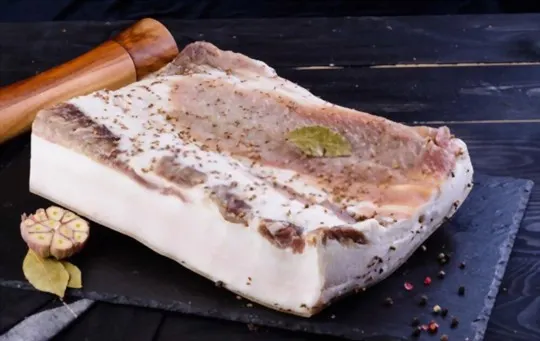Running out of Pam cooking spray isn’t a kitchen disaster.
We’ve got your back with some top-notch alternatives.
Finding the right substitute can turn a recipe flop into a top-notch dish.
Sure, Pam is a go-to for preventing stickiness,
but life’s too unpredictable to rely on just one option.
Oil and butter aren’t the only players on the field.
We’re here to introduce you to some game-changing swaps.
These substitutes not only prevent sticking;
they can also add an extra layer of flavor to your meals.
Grab your aprons, and let’s get cooking with some creative kitchen swaps.
Turning a potential cooking hiccup into a success story is what we do best.
Trust us, you’re going to want to try these out.
What is Pam Cooking Spray?

Pam is a brand of a cooking spray designed to prevent food from sticking to pans during the cooking process.
The spray is made of fat and flour and is non-toxic to people.
It does not contain any chemicals or fuels that can be harmful to cookware or the environment.
Pam can be used on various cooking surfaces, such as trays, baking sheets, and pans.
The spray coats the surface with a thin layer of oil, which prevents the food from sticking.
The spray is ideal for baking and helps save cooking time, which can be beneficial both at home and in professional kitchens.
The spray is easy to use and does not leave behind any residue once baked onto the surface.
Most cooking sprays are vegetable oil-based; however, recently, there has been a shift towards plant-based cooking sprays.
The main ingredient for these sprays is canola oil, which has a lower saturated fat content than other oils.
There are also zero cholesterol spray cans available on the market.
The 5 Best Substitutes for Pam Cooking Spray
Pam cooking spray is a popular non-stick cooking spray used to prevent food from sticking to pans and baking dishes.
However, if you don’t have Pam on hand or prefer alternative options, there are several substitutes available.
In this guide, we will compare the top 5 substitutes for Pam cooking spray, discussing their key characteristics and suggesting proper ratios to help you achieve similar results in your cooking.
| Substitute | Key Characteristics | Proper Ratio |
|---|---|---|
| Tallow | Rendered fat from animals such as beef or pork; provides a rich flavor and excellent non-stick properties | Use a light coating of melted tallow or brush it onto the cooking surface before cooking |
| Palm Oil | Vegetable oil derived from the fruit of oil palm trees; has a neutral flavor and high smoke point | Use a light coating of melted palm oil or brush it onto the cooking surface before cooking |
| Butter or Margarine | Dairy-based products with a rich flavor and lower smoke point; suitable for adding flavor to dishes | Use a small amount of butter or margarine and spread it evenly on the cooking surface before cooking |
| Extra Virgin Olive Oil | High-quality olive oil made from cold-pressed olives; imparts a distinct flavor and can be used in various ways | Use a light coating of extra virgin olive oil or brush it onto the cooking surface before cooking |
| Canola Oil | Neutral-flavored oil with a high smoke point; versatile and suitable for various cooking methods | Use a light coating of canola oil or brush it onto the cooking surface before cooking |
Now let’s dive into each substitute in more detail:
1 – Tallow

Tallow is a type of animal fat that comes from the rendering process.
It’s primarily used as a cooking oil used in traditional cultures for centuries.
Tallow can be made out of both pork and beef.
Furthermore, the tallow does not have much flavor, so it could add heat to your meal if you opt for the beef tallow.
Unlike the other types of Fats, tallow is solid at room temperature.
It can be used in almost any recipe that calls for oil or shortening.
This includes baking, deep-frying, cooking, and sauteing.
Tallow tastes great on its own, but it also mixes well with other flavors like pepper or garlic.
Tallow often has a very high smoke point, making it ideal for cooking on higher heat and searing meats.
It’s also worth mentioning that tallow does not absorb flavors easily and is typically used with other ingredients in terms of flavoring or seasoning.
- Key Characteristics: Tallow is rendered fat from animals such as beef or pork. It provides a rich flavor and excellent non-stick properties. Tallow is commonly used in traditional cooking and can be a suitable substitute for Pam.
- Proper Ratio: Use a light coating of melted tallow or brush it onto the cooking surface before cooking. Adjust the quantity based on your recipe requirements and desired level of non-stickiness.
2 – Palm Oil

Palm oil is another type of animal fat used to make cooking oil.
It’s derived from the African palm tree and contains more saturated fats than tallow or butter.
Palm oil has a very high smoke point, like tallow, ideal for searing meats.
Palm oil’s high smoke point causes it to have a light, nutty taste that pairs well with different flavors.
It has a soft color and does not have much of an odor.
This makes it perfect for cooking seafood, vegetables, or frying eggs.
Furthermore, palm oil doesn’t clog up drains if you dispose of the liquid.
- Key Characteristics: Palm oil is a vegetable oil derived from the fruit of oil palm trees. It has a neutral flavor and a high smoke point, making it suitable for various cooking methods. Palm oil can be used as a substitute for Pam.
- Proper Ratio: Use a light coating of melted palm oil or brush it onto the cooking surface before cooking. Adjust the quantity based on your recipe requirements and desired level of non-stickiness.
3 – Butter or Margarine

Butter is another type of fat that can be used when cooking.
This is because it contains animal fats, solid at room temperature.
This makes it easier to control when sauteing meats in a pan.
Butter has an aroma and flavor that most people enjoy.
It holds flavors well and can be used in many recipes.
However, butter has saturated fats that are not good for your heart.
It also tends to burn at higher temperatures than other oils, which leads to extra residual buildup.
This means more scrubbing is required after cooking with it.
Similarly, margarine is another option you can try if you’re looking for a substitute.
Its made up of vegetable oil, water, and milk proteins.
This gives it a rich taste similar to butter without the dairy.
Margarine is very versatile and can be used in most recipes and on all types of dishes.
However, like butter, margarine has high saturated fats, which you avoid in a healthy diet.
You also have to be careful when storing margarine since it can’t go in the freezer, and it doesn’t have a long shelf life.
- Key Characteristics: Butter and margarine are dairy-based products with a rich flavor. While they have a lower smoke point compared to Pam, they can add flavor to dishes and be used as a substitute in certain recipes.
- Proper Ratio: Use a small amount of butter or margarine and spread it evenly on the cooking surface before cooking. Adjust the quantity based on your recipe requirements and desired flavor enhancement.
4 – Extra Virgin Olive Oil

Extra virgin olive oil is another type of fat you can use in your cooking.
This is because it’s made from pressing the fruit instead of distilling it.
This gives extra virgin olive oil its distinct flavor and aroma.
Extra virgin olive oil has a strong flavor that’s great for cooking semi-strong foods.
This includes vegetables, meat, and seafood.
The high-quality fat in this oil helps to improve the taste of your meal while avoiding harmful fats found in other types of cooking oils.
However, note that extra virgin olive oil has a low smoke point, so it’s not good for cooking on high heat.
Instead, you can use it as a dip with bread or as a finishing oil to drizzle over your dish right before enjoying it.
- Key Characteristics: Extra virgin olive oil is a high-quality olive oil made from cold-pressed olives. It has a distinct flavor and can be used in various cooking methods. While not a direct substitute for Pam, it can provide a non-stick surface and add flavor to dishes.
- Proper Ratio: Use a light coating of extra virgin olive oil or brush it onto the cooking surface before cooking. Adjust the quantity based on your recipe requirements and desired level of non-stickiness and flavor.
5 – Canola Oil

Canola oil is another type of fat used in your cooking.
This is because it’s made from pressing the seeds of a plant related to cabbage.
Canola oil has more monounsaturated fats than polyunsaturated fats, making it healthier for you.
This makes canola oil a good choice for cooking or frying on high heat.
It can be used to make various foods and typically has a light taste that does not overpower other ingredients in recipes.
However, keep in mind that canola oil is relatively new on the market and might not have been approved for mass consumption yet.
Therefore, you should check with your nutritionist before using it instead of alternatives like extra virgin olive oil.
- Key Characteristics: Canola oil is a neutral-flavored oil with a high smoke point. It is versatile and suitable for various cooking methods, including baking and frying. Canola oil can be used as a substitute for Pam in most recipes.
- Proper Ratio: Use a light coating of canola oil or brush it onto the cooking surface before cooking. Adjust the quantity based on your recipe requirements and desired level of non-stickiness.
Conclusion
Pam cooking spray is popular with many home cooks because it makes cooking much easier.
However, not everyone wants to eat the chemicals found in these sprays.
Luckily, there are several alternatives you can use instead.
The best substitutes for Pam cooking spray are animal fat, butter, margarine, extra virgin olive oil, and canola oil.
Each substitute has its own distinct flavor and benefits depending on what you’re cooking.

The 5 Best Substitutes for Pam Cooking Spray
Ingredients
- Tallow
- Palm Oil
- Butter or Margarine
- Extra Virgin Olive Oil
- Canola Oil
Instructions
- Pick your favorite substitute from the list above.
- Follow cooking directions for your selected substitute with the proper ratio of ingredients.

Andrew Gray is a seasoned food writer and blogger with a wealth of experience in the restaurant and catering industries. With a passion for all things delicious, Andrew has honed his culinary expertise through his work as a personal chef and caterer.
His love for food led him to venture into food writing, where he has contributed to various online publications, sharing his knowledge and insights on the culinary world. As the proud owner of AmericasRestaurant.com, Andrew covers a wide range of topics, including recipes, restaurant reviews, product recommendations, and culinary tips.
Through his website, he aims to inspire and educate fellow food enthusiasts, offering a comprehensive resource for all things food-related.

Leave a comment